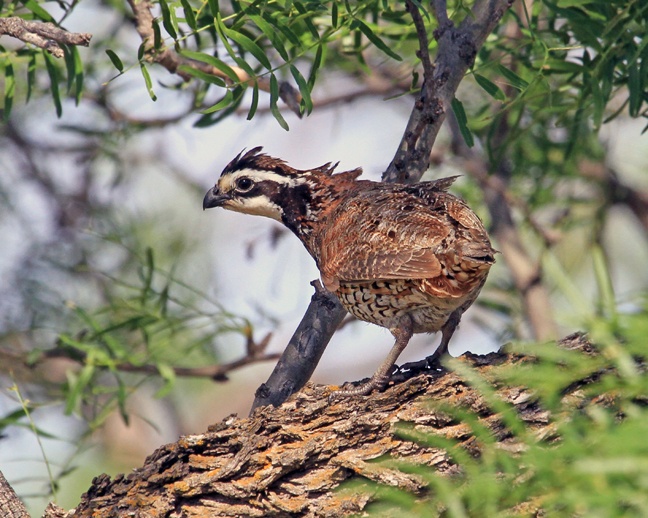We have much more to do and your continued support is needed now more than ever.
Five Species Impacted by Unnatural Disasters in 2019
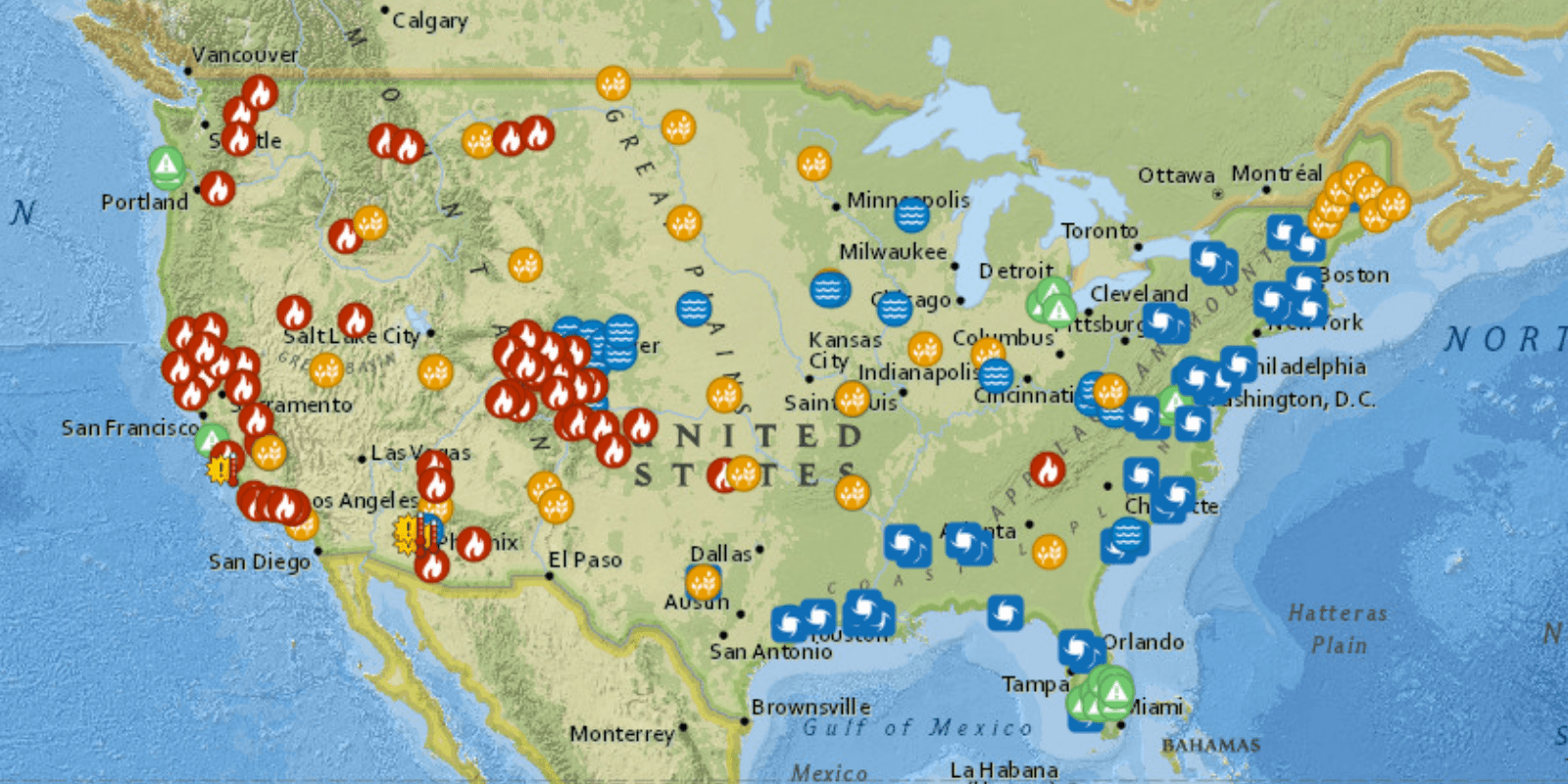
Climate scientists are increasingly connecting the dots between extreme weather events and our warming climate. Hurricanes are now stronger and wetter, wildfires burn longer and hotter, droughts are deeper, and heat waves are more severe. As the intensity of these disasters grows, so does the amount of damage and the resulting costs. In the past two years, the United States has experienced at least 24 separate billion-dollar weather and climate disasters, causing damages that totaled more than $101 billion.
These events are not only costly and cause numerous deaths each year, but they also have a lasting impact on ecosystems across our nation. Wildlife are killed at an alarming rate as megafires burn through their habitats, temperatures rise to unbearable highs, monster tropical storms displace species, algal outbreaks drastically deplete marine ecosystems, and droughts lead to disease outbreaks, more wildfires, and altered nutrient cycling.
Here are five species that most directly felt the impacts of climate change-fueled disasters in the United States this past year:
1. Alaskan Salmon
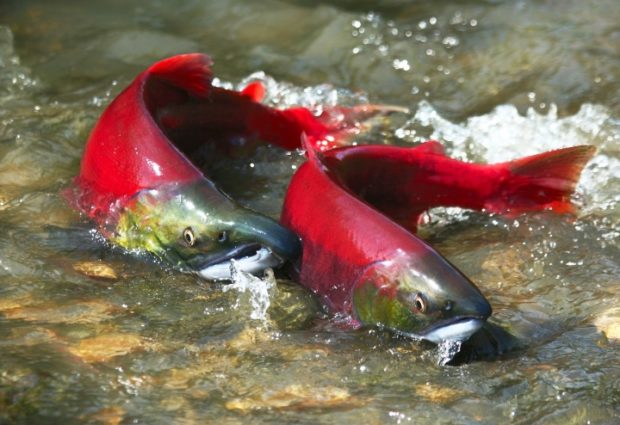
Alaska experienced its hottest month in recorded history in July 2019. According to NOAA’s National State of the Climate report, Alaska’s statewide average temperature was 7.9°F above average from January to June of 2019. This unprecedented heat wave killed large numbers of salmon in the state. Scientists observed die-offs of several varieties of Alaskan salmon, including sockeye, chum, and pink salmon. The extreme heat decreased the amount of oxygen in the water, causing the fish to suffocate. Stephanie Quinn-Davidson, director of the Yukon Inter-Tribal Fish Commission, and a group of scientists visited Alaska’s Koyokuk River at the end of July 2019 to observe the die-offs. Quinn-Davidson counted 850 dead salmon in the area, but her team estimated that the total was likely four to 10 times larger.
“A river that is usually teeming with life felt like a tomb,” University of Alaska Fairbanks fisheries professor Peter Westley told NPR about Alaska’s Koyokuk River.
Heat waves are becoming more frequent and severe, putting both people and wildlife at extreme risk. Terrestrial and marine species alike face immense challenges trying to survive as their habitats reach intolerable temperatures.
2. Great Horned Owl
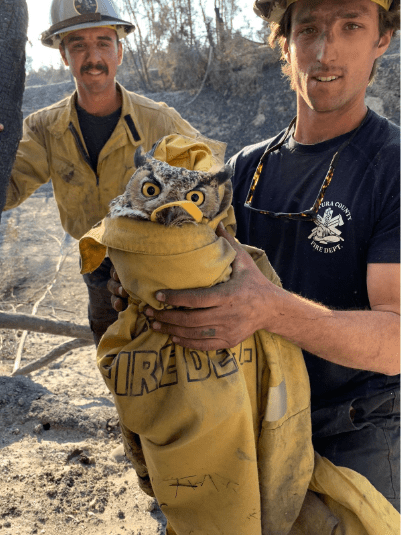
California’s 2019 wildfire season burned an estimated 259,823 acres, and the state’s largest fire of the year—the Kincade Fire—burned an estimated 77,758 acres. The Maria Fire, which started just a week after the Kincade Fire, torched 9,999 acres in California’s Ventura County. At least 7,500 people had to evacuate due to the fire, and many wildlife were forced to do the same—including the great horned owl.
Firefighters from the Ventura County Fire Department found a great horned owl hopping along the ground through ashes as they patrolled an area near the Maria Fire on November 3. This sighting was unusual and alarming because great horned owls are normally active at night and are rarely found on the ground. The firefighters noticed that the owl looked sickly and was disoriented, so they took the bird to the Camarillo Wildlife Rehabilitation center. Staff at the center determined that the owl was suffering from smoke inhalation and a bad case of flat flies, or louse flies.
A female fox that was found in California’s 2018 Woolsey Fire was also taken to the Camarillo Wildlife Rehabilitation center, severely emaciated and exhausted with burned feet. As megafires rage through U.S. forests, species like the great horned owl are forced to flee their habitats with uncertainty of where to go next. Fortunately, this particular owl, which the firefighters named “Ram” after the Los Angeles Rams, made a full recovery at the Camarillo Wildlife Rehabilitation center. But, not all wildlife have been that lucky. Some vulnerable species that were unable to escape, such as California’s red-legged frog, were killed in the fires.
3. Green Sea Turtle
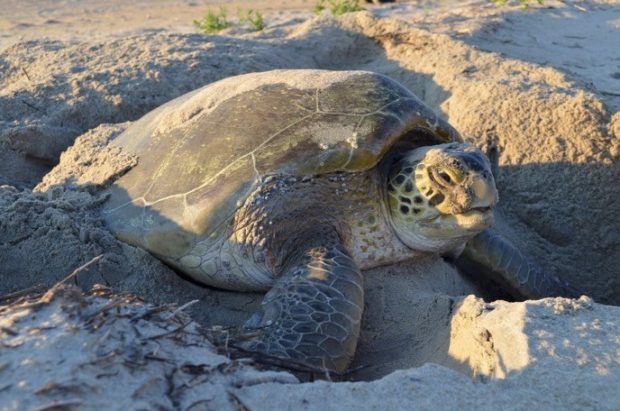
This past year, Hurricane Dorian battered the Bahamas as their strongest hurricane on record, killing at least 67 people. Dorian went on to ravage the East Coast of the United States, killing at least four people. The powerful hurricane not only took many human lives, caused damages costing billions, and spurred a nearly 1.5 million gallon oil spill, but it also greatly harmed vulnerable and endangered marine species.
Dorian’s high waters washed away more than 8,000 sea turtle nests along the coast of Brevard County in Florida. University of Central Florida researchers stated that Dorian’s storm surge washed away about 45 percent of the green sea turtle nests for the season, as well as 20 percent of loggerhead sea turtle nests, at the Archie Carr National Wildlife Refuge. This refuge is among the world’s most important nesting sites for threatened and endangered sea turtles like the green sea turtle. Green sea turtles typically nest in September—later in the season than other turtle species—during peak hurricane season and around the time Dorian made landfall. Those factors meant that green sea turtles were hit the worst. Green sea turtles only nest about every two years, laying 100-200 eggs per nest, making every nest destruction a major loss.
4. Cheat Mountain Salamander
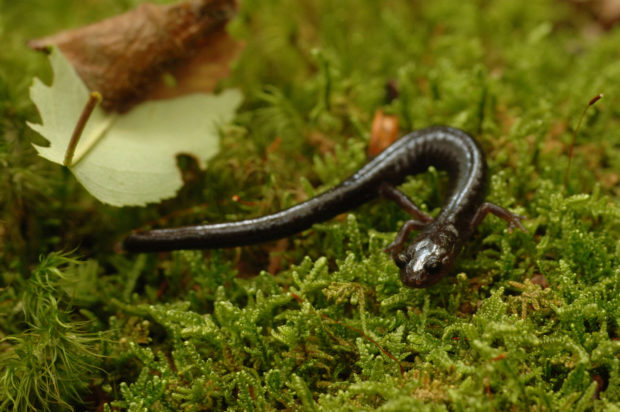
In 2019, West Virginia’s Gov. Jim Justice declared a State of Emergency for all 55 West Virginia counties in October due to severe drought conditions. This drought greatly impacted communities across the state, especially areas that rely on agriculture and livestock. The USDA’s 2019 crop progress report stated that approximately 60 percent of the pasture land in West Virginia was in poor to fair condition, compared to about 40 percent in 2018.
West Virginia’s drought did not just cause major problems for farmers and livestock. The Cheat Mountain salamander—a threatened, endemic species found in West Virginia’s Cheat Mountain—felt the ripple effects of 2019’s severe drought, as well. The Cheat Mountain salamander has been federally listed under the Endangered Species Act since the 1980s, and climate change-fueled droughts are putting this species more at risk. West Virginia’s red spruce habitat provides a cool, moist refuge for this salamander. These salamanders keep to forests with moist ground cover for a very important reason: They lack lungs and must breathe through their skin and membranes in their mouth and throat. When the weather gets too hot and dry, as it did during West Virginia’s drought this past year, the salamanders must find moist cover to survive. Logging, fires, and acid rain from the burning of coal have already diminished West Virginia’s red spruce population, and scientists warned that red spruce are particularly vulnerable to drought conditions. Not only did the 2019 drought threaten the red spruce forests of West Virginia, but it also greatly endangered the Cheat Mountain salamander, which relies on those trees to provide habitat conditions necessary for its survival.
Droughts greatly affect forest-dependent species such as the Cheat Mountain salamander and West Virginia’s northern flying squirrel. Climate change is projected to fuel more severe weather events, including droughts and extreme heat, that may hinder the spruce’s ability to ever recover—and in turn, the Cheat Mountain salamander’s chances of survival, as well.
5. Double-Crested Cormorant

Harmful algal outbreaks are increasing both in frequency and intensity. Algal outbreaks can negatively affect human and wildlife health as they can consume vast amounts of oxygen—suffocating ecosystems—and can produce toxins that poison people and animals.
Red tide algal outbreaks caused by blooms of the harmful Karenia brevis algae are particularly common in coastal parts of Florida. In July 2018, a harmful red tide event was linked to the deaths of dolphins, a whale shark, a goliath grouper, and more than 100 sea turtles and manatees. In 2019, there were clear signs that the red tide had reappeared—including double-crested cormorants that were found staggering along the beach.
“We have definitely been seeing red tide patients for several weeks now,” Joanna Fitzgerald, director of the Conservancy of Southwest Florida’s von Arx Wildlife Hospital in Naples, told USA Today in November. “The main ones are the double-crested cormorants [seabirds]. They’re the big [indicator species]. When you see them stumbling along the beach, you know what’s going on.”
The Clinic for the Rehabilitation of Wildlife (CROW) officials reported that they began seeing the effects of the 2019 red tide outbreak happening off the coast of Lee and Collier Counties in early October. By the end of that month, 24 double-crested cormorants were brought in that showed signs of red tide poisoning. The cormorants suffering from red tide toxicity presented symptoms such as an emaciated appearance, inability to walk, fly, or eat on their own, and minor head tremors.
Researchers also found the largest stranding of sea turtles in a single month this October in Collier County as the red tide continued to invade Florida. Maura Kraus, the principal environmental specialist for the county’s parks and recreation division, reported 88 sea turtle strandings in 2019, with 60 of those in October alone. Of the 60 dead turtles found in October, 50 were Kemp’s ridley sea turtles—the most critically endangered of all sea turtles.
Sweltering heatwaves, smoky skies, torrential downpours, desiccated lands, and toxic water. Many natural disasters are becoming more dangerous because of climate change, and their far reaching impacts have negatively affected people and wildlife across the United States. The National Wildlife Federation’s newly updated interactive story map, Unnatural Disasters, not only highlights where climate change-fueled hurricanes, algal outbreaks, wildfires, droughts, floods, and extreme heat waves have hit in recent years across the United States, but it also demonstrates their impacts on local economies and wildlife.
At a time when 22 percent of reptiles, 15 percent of bony fish, 13 percent of birds, and 41 percent of amphibians are at risk of extinction, serious, long-term investments need to be made to combat climate change. The Unnatural Disasters map illustrates that our elected officials need to take climate change and its cascade of consequences seriously and take action to protect both human and wildlife populations. Policymakers should adopt practical solutions that will mitigate the impacts of climate change by quickly reducing greenhouse gas emissions and ensuring wildlife and natural systems are able to adapt and build resilience to unavoidable impacts.
TAKE ACTION!

